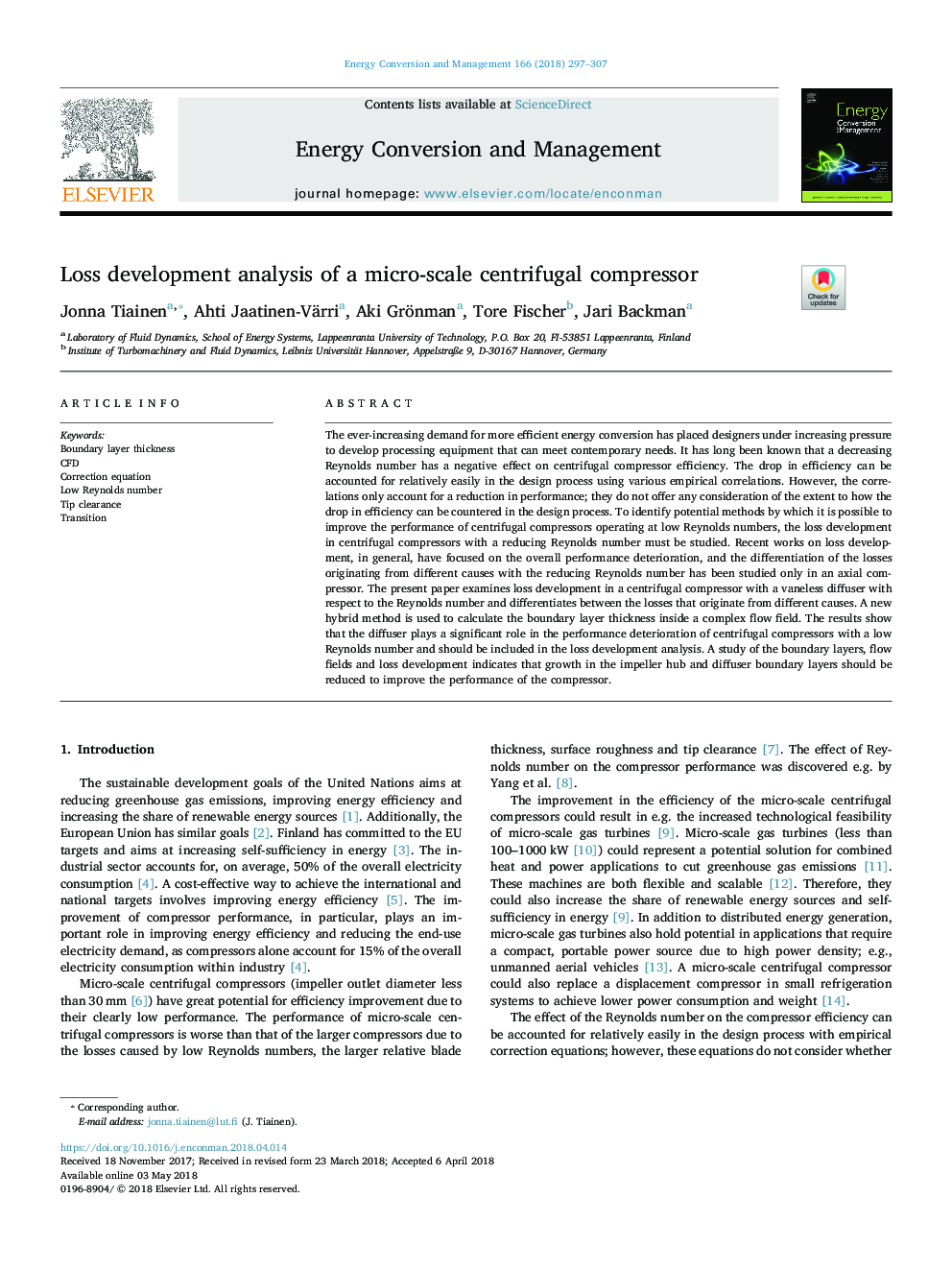| Article ID | Journal | Published Year | Pages | File Type |
|---|---|---|---|---|
| 7158374 | Energy Conversion and Management | 2018 | 11 Pages |
Abstract
The ever-increasing demand for more efficient energy conversion has placed designers under increasing pressure to develop processing equipment that can meet contemporary needs. It has long been known that a decreasing Reynolds number has a negative effect on centrifugal compressor efficiency. The drop in efficiency can be accounted for relatively easily in the design process using various empirical correlations. However, the correlations only account for a reduction in performance; they do not offer any consideration of the extent to how the drop in efficiency can be countered in the design process. To identify potential methods by which it is possible to improve the performance of centrifugal compressors operating at low Reynolds numbers, the loss development in centrifugal compressors with a reducing Reynolds number must be studied. Recent works on loss development, in general, have focused on the overall performance deterioration, and the differentiation of the losses originating from different causes with the reducing Reynolds number has been studied only in an axial compressor. The present paper examines loss development in a centrifugal compressor with a vaneless diffuser with respect to the Reynolds number and differentiates between the losses that originate from different causes. A new hybrid method is used to calculate the boundary layer thickness inside a complex flow field. The results show that the diffuser plays a significant role in the performance deterioration of centrifugal compressors with a low Reynolds number and should be included in the loss development analysis. A study of the boundary layers, flow fields and loss development indicates that growth in the impeller hub and diffuser boundary layers should be reduced to improve the performance of the compressor.
Related Topics
Physical Sciences and Engineering
Energy
Energy (General)
Authors
Jonna Tiainen, Ahti Jaatinen-Värri, Aki Grönman, Tore Fischer, Jari Backman,
